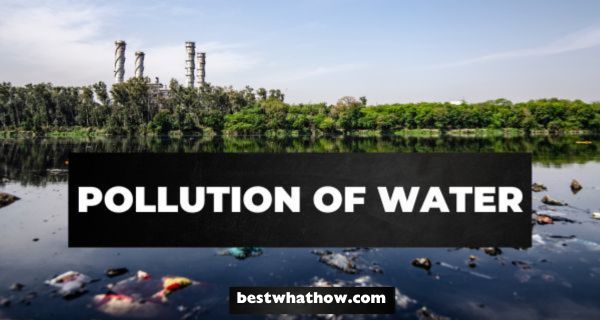Water is one of our Earth’s most precious resources. Water is an important and life- sustaining drink for all living beings including plants and animals.
Water Cycle
Water from lakes and seas evaporates in the air. When it reaches high above, it cools and forms clouds in the sky.
On further cooling, the water vapour in the clouds condenses and falls down in the form of rain, snow or hail. This water flows down into rivers, lakes, ponds and oceans or seas. This is water cycle. It goes on continuously in nature.
Moisture in the Atmosphere
You would have noticed clouds in the sky. Moisture in the atmosphere causes the formation of clouds. Thick clouds bring rain. In winter season, we experience fog cover like cloud over land.
This is also caused by moisture. This is the gaseous form of water. The water found in the atmosphere is colourless, tasteless and odourless.
Evaporation
You would have observed some steam or water vapour going up while your mother boils water. The process of water escaping to the atmosphere when heated is called evaporation. There are two factors that support evaporation. These are temperature and wind.
Temperature
Evaporation takes place at any temperature. If the heat is more, evaporation is more. You would have noticed this when your mother cooks food. When she increases the fire, the evaporation also increases.
Wind
When wind blows, the air moves fast. This gives more place for the air to expand. So, evaporation increases when wind blows.
Condensation
This is the opposite of evaporation. When evaporated water turns back into liquid, it is called condensation. When this liquid begins to fall as drops of water, it is called rain. Sometimes rain falls as heavy shower and at times it comes as drizzle.
When the temperature in the higher atmosphere is very cold, these tiny drops of water start freezing. Then this becomes ice-crystals. These crystals fall as ice (hailstones) or snow.
Major Sources of Water
Rainwater is the most important source of water. This water flows and gets collected in oceans, seas, lakes and rivers.
Ground Water
Some of the rainwater seeps down into the ground. It gets collected in the layers of the rocks and the soil. This is called groundwater. We make wells and tube wells to draw this water. This water may not be clean enough for drinking or cooking. It needs to be filtered or boiled.
Inland Water
Inland water is found in water bodies located within land boundaries. This includes coastal areas, wetlands, lakes, canals, rivers, reservoirs and ponds.
A pond is a small area of water surrounded by land. A lake is an area of water larger than a pond. Rivers originate from high mountains when ice in the glaciers melts. Rivers like the Ganga and the Yamuna originate from the Himalayas. They never dry up. Such rivers are called snow-fed rivers.
Some rivers like the Godavari and the Krishna carry water only during rainy season. They mostly dry up in the summer season. Such rivers are called rain-fed rivers.
The place where a river begins is called its source. The place where the river joins the sea is called the mouth of the river. A delta is a triangular deposit of sand, silt and clay formed at the mouth of the river. A river basin is a huge fertile piece of land around a large river.
Uses of Water
Water is used for agricultural purposes. Water is used in our homes for drinking, cooking and washing. Industries cannot work without water.
Water is also used in swimming pools and in parks as fountains for recreational purposes.
Storage of Water
Dams
A dam is high wall built across a river to check the flow of water. The stored water is used for various purposes.
Reservoir
A reservoir is an artificial lake built behind a dam. It stores the river water. This water is used to generate electricity.
Canal
A channel of water taken out from a river or reservoir is called a canal. It is used for agricultural purposes.
Oceans and Sea
Sea is large body of salty water. It is connected to an ocean. In the west of India, lies the Arabian Sea. It is connected to the Indian Ocean which is found at the southernmost end of India. Ocean and sea water are not fit for drinking or cooking as they contain salt in them.
Process of Making Salt
Salt is made through the process of evaporation of sea water. Large areas around the sea shore are cut-off from the sea by constructing dykes.
Sea water is enclosed in large salt fields and allowed to evaporate. After the water evaporates, salt is found in crystal form. This salt is collected and sent to the factories for further refining. This method is possible only at places where the climate is very hot.
Animals in Water
Sharks, sardines and many other varieties of fish live in the ocean. Mammals like whales and sea lions are also found in the ocean.
Potable Water
Fresh water from rain or river cannot be used for drinking directly as it may contain a lots of impurities. Boiling, filtering or other water treatments have to be done to make water potable. The water that is safe to drink is called potable water.
Water-borne Diseases
In many parts of the world, people do not have access to safe drinking water. So, many people drink contaminated water. Drinking or using such water in food preparation leads to illnesses. It is a major cause of death in India. Diarrhoea is a common illness, especially in children, caused due to dirty water.
Other water-borne diseases are typhoid, cholera, dysentery and jaundice. Contaminated water spreads diseases. Illnesses that are spread through the medium of water are called water-borne diseases.
In order to prevent these diseases, we need to drink clean water. At home, the water should be boiled or filtered before drinking. Only filtered water should be used for cooking and washing vegetables that we wish to eat raw.
Purification of Water
Water purification is the process of removing all types of dirt and pollutants from water such as bacteria, viruses, fungi and other chemicals that are harmful to our health. Water is made potable after its purification. Water from rivers or lakes is brought to water treatment plants through channels. This water is filtered and treated with chemicals to purify it.
Usually, chlorine gas is sent through water to purify it. This process kills bacteria. Bleaching powder and potassium permanganate are also used to kill germs in water. Purified water is sent to the different localities through pipes. Water is stored in the tanks and sent to homes through a network of pipes.
At home, water is further purified by boiling it. Boiling water for 15-20 minutes kills the germs in it, thus making the water drinkable.
Some people add some lime and soda ash to purify the well or tank water. Though it is a simple process of water purification, it is not fully effective. People also use different types of water filters at home.




















